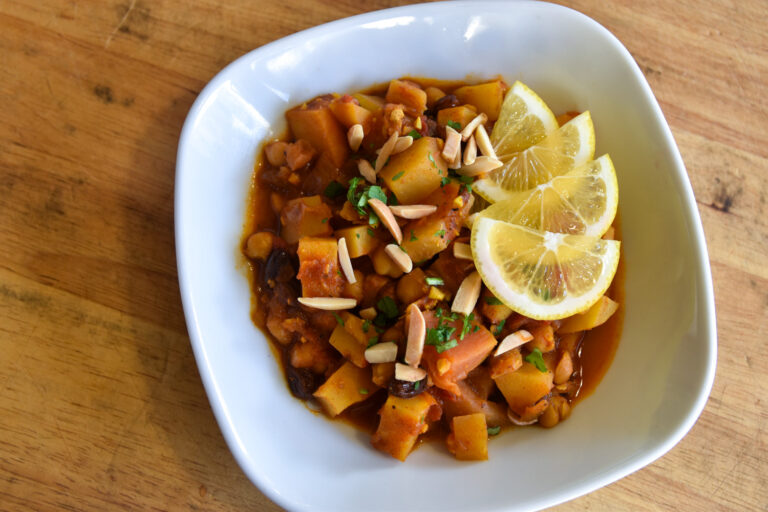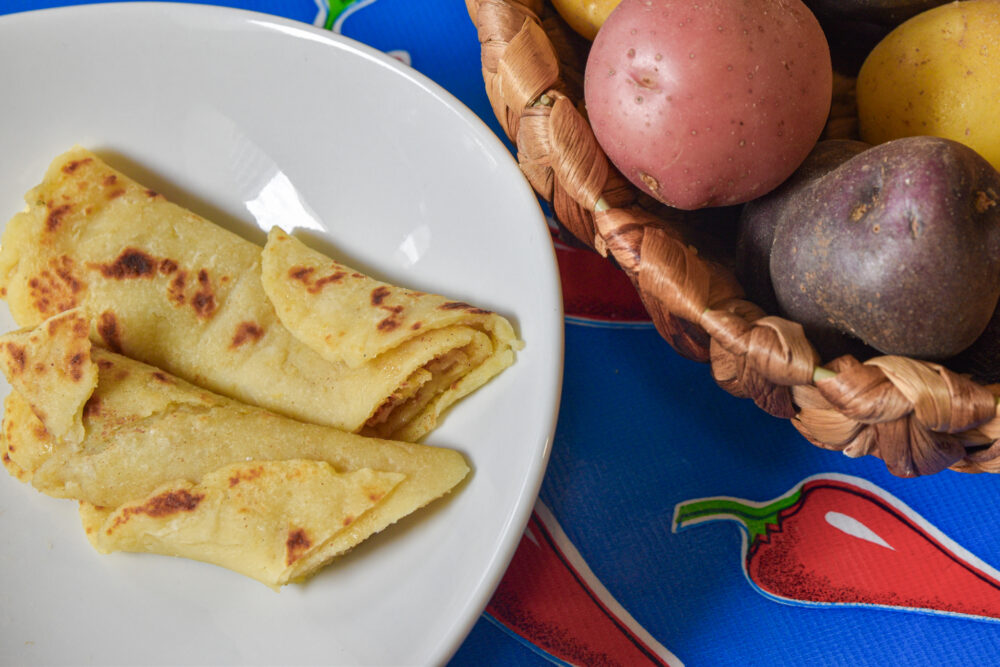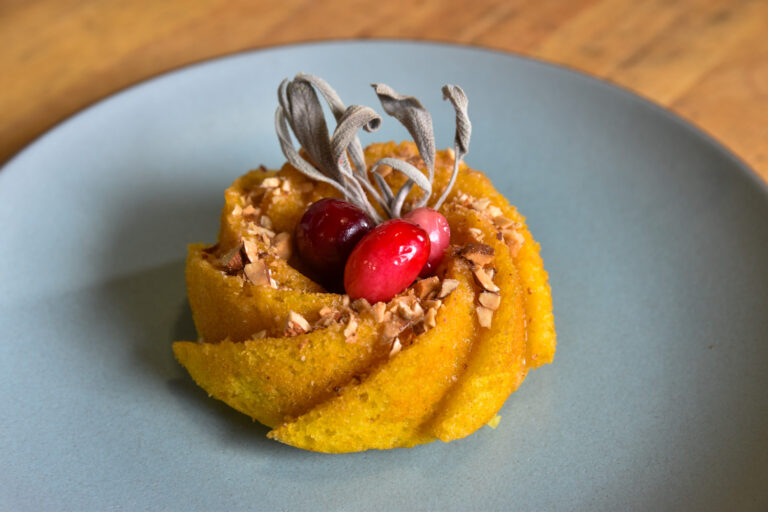
Lefse (Potato Flatbread)
Source: Nichole Accettola, Scandinavian from Scratch

Recipe Type: Appetizers and Sides | Seasons: Autumn, Winter
This recipe appears in Scandinavian by Scratch by Nichole Accettola (Penguin Random House, 2023) and was demonstrated at the Foodwise Classroom on November 18, 2023.
Lefser (lefse in the singular) are traditional flatbreads from Norway made from flour, butter, cream, and sometimes potatoes. Some people call them “Norwegian pancakes,” but they are closer to a tortilla in their versatility. In Norway, you might just as easily find lefser on the table at the reception for a fancy wedding as sold at gas stations as a convenient snack. While they are frequently served like a dinner roll—a humble starch used to sop up the juices of a meal—they can also be eaten as a sweet treat, slathered with butter, sprinkled liberally with sugar, and rolled up. As you can imagine, kids tend to prefer the latter. In Norway, lefser are often featured at holiday meals, a tradition that has been passed down in Norwegian American households, many of which are in possession of a special lefse pan and notched rolling pin. You can definitely make them without these supplies, however. This recipe calls for potatoes to be mashed with butter and cream and chilled overnight before flour is added to form a dough that gets rolled into thin disks and cooked in a hot skillet. If you happen to have leftover mashed potatoes (say, after Thanksgiving), this would be a fun way to use them up. My favorite way to eat lefser is spread with herbed cream cheese and topped with gravlax or smoked trout, pickled red onions, capers, and fresh dill.
Makes 10 8 inch (20 centimeter) flatbreads
INGREDIENTS
2½ pounds (1.1 kilogram) Yukon Gold or other creamer potatoes, peeled and cut into 1-inch (2.5 centimeter) chunks
½ cup (113 grams) unsalted butter, at room temperature, plus more as needed
½ cup (113 grams) heavy cream
2½ teaspoons kosher salt
3 cups (384 grams) all-purpose flour, plus more for dusting
PREPARATION
Place the potatoes in a large saucepan and cover them with water. Bring the water to a gentle boil over medium-high heat and cook for 10 to 12 minutes, until the potatoes are tender.
Drain the potatoes and transfer them to a large bowl, adding the butter while the potatoes are still hot, so that it melts. Using a potato masher, ricer, or dinner fork, mash them as thoroughly as you can.
Add the cream and 2 teaspoons of the salt and continue mixing until the potatoes are smooth and creamy. Taste them and add the remaining ½ teaspoon salt, if desired.
Transfer the potatoes to an airtight container and refrigerate them overnight.
When you are ready to make the lefser, liberally dust a work surface with flour.
Begin adding the flour to the bowl with the chilled mashed potatoes, 1 cup (128 g) at a time, until it forms a soft and shaggy dough.
You can start mixing this dough with a wooden spoon but eventually you will need to turn the dough out onto the work surface and put some muscle into it to crush the potato chunks and knead it into a smooth ball.
Roll the dough into a thick log and then divide it into ten portions. Roll each portion into a ball and cover them with a clean kitchen towel.
Set an ungreased cast-iron pan (or lefse pan, if you have one) over medium-high heat, letting it heat up for a few minutes. You need the pan to be very hot to create the dark spots that characteristically freckle lefser.
With a bench scraper, clean any doughy residue off the work surface where you rolled the balls of dough, then liberally dust it with more flour before you start rolling out the first ball, as this is a very sticky dough.
When rolling out the dough, follow the “air hockey” method. Be sure to repeatedly slide a bench scraper under the rolled-out dough, dusting more flour onto the work surface beneath it as needed and flipping it as you work. Don’t worry about the amount of flour used to roll out the lefser; any excess will be brushed off prior to baking.
While rolling, apply soft and even pressure and regularly check to make sure that you can always lift the dough off the work surface. With all of this in mind, roll out the first ball of dough to about 8 inches (20 cm) in diameter.
When your lefse is as thin as you can make it, brush off any excess flour with a dry pastry brush. If you have a notched rolling pin, roll it once over the surface of your dough. If not, prick the surface of the flattened dough all over (about thirty-five times) with the tines of a fork.
Gently roll it over and around your rolling pin and carry it that way to the stove, carefully unfurling it directly into the hot pan. Cook your lefse for 1 to 2 minutes on each side, until speckled with golden brown spots.
While each lefse is cooking, roll out the next one to have ready. If you have two cast-iron pans, you could heat both and cook two lefser at once.
Transfer each cooked lefse to a plate, covering the pile with a clean kitchen towel while you continue to roll out and cook the remaining balls of dough. If the lefser start to stick to the pan, add a bit of butter.
Lefser are typically served at room temperature, spread with savory or sweet toppings. My favorite way to eat them is to smear them with butter, sprinkle with cardamom sugar and roll them up. It just works! I think they are best served fresh on the day they are made, but they can be stored in an airtight container in the refrigerator for up to 1 week. Just make sure to place a sheet of parchment paper between each lefse before storing.
Air hockey method:
Whether you are rolling out dough for a buttery tart crust or Danish Dough, your dough is likely to stick to your work surface, especially if the temperature in your kitchen is warm. Here is my preferred method to keep the rolling-out process from becoming frustrating and the dough from turning into a sticky mess: Visualize an air hockey puck, which should always skim the surface of the air hockey table. Similarly, you want your dough to stay separate from the work surface on which you are rolling it out, never letting it get glued down. To achieve this, as you roll out your dough, repeatedly lift it up as gently as you can, using your bench scraper to detach any stuck parts, and sprinkle just a bit of flour onto the work surface before continuing to roll it out. Doing this a few times will keep it from adhering to the surface. But work briskly so that your dough doesn’t become too warm and sticky! If you need to use the same work surface to roll out more dough, use your bench scraper to scrape off any residual bits first so that you can start fresh, without the fear of your next batch sticking in the same spots.


